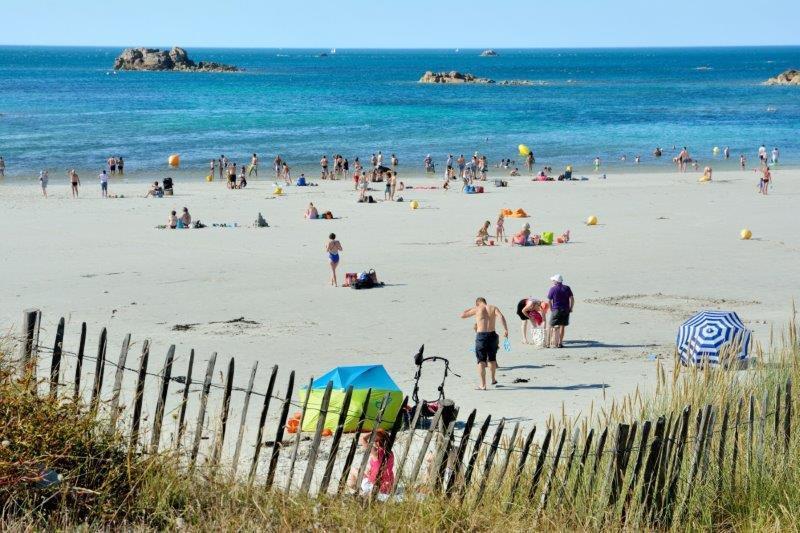This page has been automatically translated. Please refer to the page in French if needed.
Sanitary control
Swimming: what quality of water on your favorite beach?
Publié le null - Legal and Administrative Information Directorate (Prime Minister)
What is the water quality of my favorite beach? Can I swim safely? How can I monitor the results of the analyzes carried out all summer long? During the bathing season, holidaymakers and people living near bathing areas can monitor the health of the beaches in real time on the site bathing.health.gouv.fr.

You can know in real time the quality of the water of your holiday place (sea water as fresh water) by doing a very simple search on the site bathing.health.gouv.fr Ministry of Solidarity and Health. After selecting from a drop-down list the department, then the municipality, to arrive at the site that interests you, you have access to a map, the results of the last picks and the history of rankings. You can then print or download the bathing site profile
This site also allows you to discover how the controls are carried out, informs you about the regulations, offers you recommendations to fully enjoy the bathing by avoiding inconveniences, informs you about the risks of swimming in water that is not of good quality and on the ways to avoid them.
According to the criteria laid down in European Directive 2006/7/EC, 7 quality classes may be attributed to bathing water, on the basis of the results of analyzes obtained during the last 4 seasons and using a statistical method, with different quality limits between fresh and sea waters:
- Excellent: site with excellent water quality.
- Good: site with good quality water.
- Sufficient: site with sufficient water quality.
- Insufficient: site with poor water quality.
- Insufficient sampling: site does not have enough sampling this season to be classified.
- No ranking due to changes or ranking not yet possible: site for which a ranking is not yet possible.
- Prohibition: a site with a temporary ban on swimming.
The monitoring period for bathing sites covers the bathing season, but it can vary from one department to another due to different climatic conditions. Follow-up extends to mainland France from 15 June to 15 September in general and can be shorter for freshwater bathing. It shall be carried out all year round in the overseas departments.
The analyzes are carried out by the Regional Health Agencies (RHAs). The regulations provide for the taking of a sample for bacteriological control between 10 and 20 days before the opening of the season, and then at a minimum bimonthly frequency. Where bathing water quality in the preceding two years has remained in conformity with the standards laid down by the regulations, the number of withdrawals may be reduced but may not be less than one per month.
The health check shall also include visual surveillance for the presence of tarry residues, glass, plastic or other waste.
Please note
the results of the health monitoring analyzes are displayed near the beaches by the persons responsible for bathing waters (mayor or private manager).
FYI
during the 2022 bathing season, more than 34,500 water samples were taken from 3,370 bathing sites in mainland and overseas (1,296 in fresh water and 2,074 in seawater).
2.8% of bathing sites that were subject to health checks were classified as poor quality (109 sites) compared to 3% in 2021.
An improvement in the quality of the water in 2022 can thus be seen with 90.1% of bathing sites rated as excellent or good quality.
Additional topics
Service-Public.fr
Ministry of Health
Ministry of Health
Ministry of Health
Agenda
Impôts
À partir du 11 avr. 2024
Publié le 11 avril 2024
Prévention Covid-19
À partir du 15 avr. 2024
Publié le 18 mars 2024
Calendrier scolaire
Du 6 avr. au 12 mai 2024
Publié le 15 mars 2024

